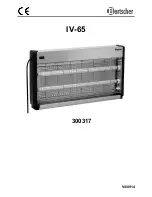
10 English
Fault tracing
AlfaNova 14–76, Part no. 34562191-03
Heat transfer problems
The heat transfer capacity is dropping.
2 Compare the
pressure drop
observed with the one
specified for the
actual flow rate (see
data printout). Is the
pressure drop higher
than specified?
YES Check the temperature
program, see step 3.
NO
If the pressure drop
corresponds to the
specifications, there is no
need for action.
If the pressure drop is lower
than specified, the pump
capacity is probably too small
or the observation may be
wrong. See pump instruction
manual.
3 Check the
thermometer
readings. Do the
readings correspond
to those specified?
YES The heat transfer surface is
probably clean enough, but
the inlet to the heat
exchanger may be clogged by
some objects. Check the port
area.
NO
Heat transfer is obviously
dropping below
specifications, because of
deposits on the heat transfer
surface, which at the same
time also increases the
pressure drop, since the
passage becomes narrower.
If a Cleaning-In-Place (CIP)
system is available, follow the
instructions and use it to
wash out the deposits.
Action
Re-
sult
Correction
Measure temperatures at
inlets and outlets. Also
measure flow rates on both
media, if possible. At least
on one of the media, both
temperatures and the flow
rate must be measured.
• Check to see if the
transferred amount of
heat energy corresponds
to the specifications.
• If great precision is
important, it will be
necessary to use
laboratory thermometers
with an accuracy of 0.1
°C, and also to use the
best equipment available
for flow measurement.
Has the heat transfer
capacity of the unit dropped
below specified values?
YES
Clean the heat transfer
surface. Use the
Cleaning-In-Place (CIP)
system.
NO
–






























